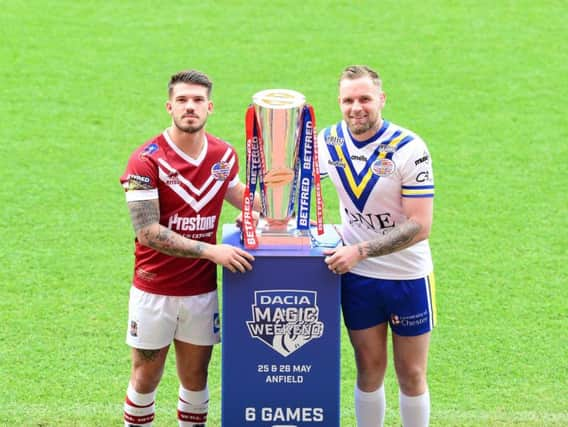Six facts about the Magic Weekend


What and why?
Former Rugby Football League chief executive Nigel Wood came up with the idea of taking a full round of Super League fixtures on the road, initially to spread the game and test the waters for potential expansion into South Wales but, more recently, it has become a celebration of rugby league and an opportunity for existing fans to enjoy a weekend away with a chance to watch all 12 teams on the same pitch.
A change of scenery for 2019
The Magic Weekend began in Cardiff at the Millennium Stadium in 2007 and has since been taken to Edinburgh's Murrayfield Stadium, the Etihad Stadium in Manchester and Newcastle's St James' Park. Anfield becomes the fifth venue for the 13th series. It was also copied by the NRL this year and almost 135,000 spectators packed into Brisbane's Suncorp Stadium over four days to ensure a successful beginning.
Why Liverpool?
Advertisement
Hide AdAdvertisement
Hide AdOrganisers were delighted with the crowds in Newcastle but felt it was time for a move to prevent the concept becoming stale after a dip in the attendance in 2018.
They were also wary of comparisons being made with rugby union's recent European Cup finals which drew bumper crowds to St James' Park. More pertinently, Super League received an attractive offer from Liverpool FC and the local authority, who pooled their resources to make a persuasive case for the switch.
A gamble
Officials are bracing themselves for a record low crowd after disappointing pre-event ticket sales. A crowd of 26,234 watched the second Test between England and New Zealand at Anfield last November and there are fears this year's Magic Weekend will struggle to reach the previous aggregate low of 52,043 at Murrayfield in 2010.
That is a far cry from the record of 68,276 set in Newcastle in 2016 but organisers claim the event will break even and that will be one of the criteria when they sit down afterwards to discuss the venue for 2020.
A change in the fixture format
Advertisement
Hide AdAdvertisement
Hide AdFor most years, the fixtures have been based on derbies, with the two Hull clubs playing each other and Wigan clashing with St Helens but there has been no hard and fast rules. Once there was a random draw and this year the games are based on the finishing league positions in 2018, so it's first-placed St Helens v third-placed Castleford, second-placed Wigan v fourth-placed Warrington and so on.
The highlight
Organisers chose the Wigan-Warrington and St Helens-Castleford fixtures to bring down the curtain each day, theoretically providing the climax, but the Leeds-London Broncos middle game on Sunday is shaping as the biggest in terms of significance, with both clubs involved in a relegation battle.
London's surprise win over Wakefield last weekend, coupled with a third defeat in four for the Rhinos means two of the teams locked on eight points will do battle for the crucial spoils.